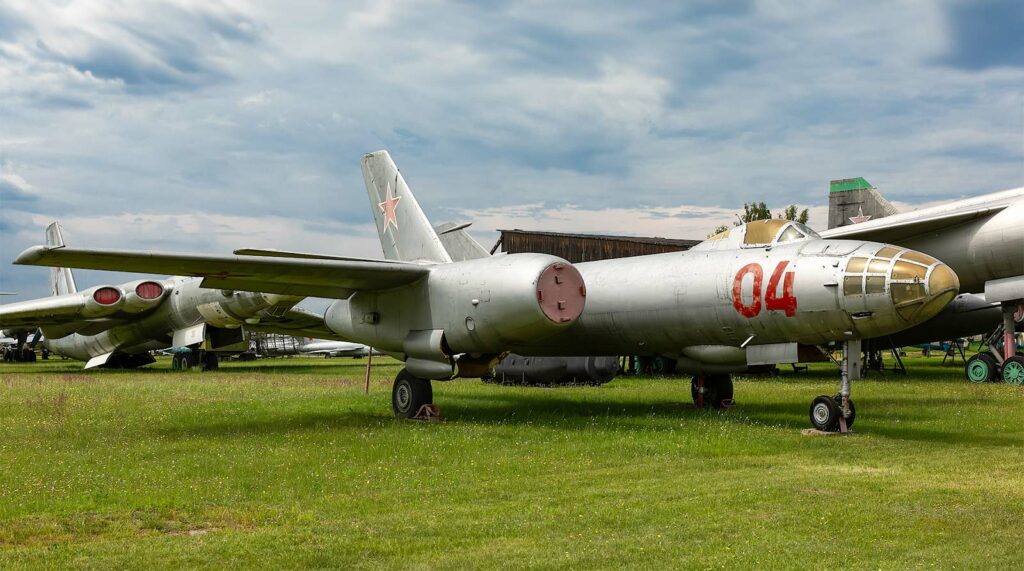The Ilyushin Il-28, a Soviet twin-engine jet bomber of the early Cold War era, known for its versatility, reliability, and NATO nickname ‘Beagle’. The Ilyushin Il-28, also known by its NATO reporting name ‘Beagle,’ was a mainstay of the Soviet Union’s bomber fleet during the early years of the Cold War, marking a significant step in the development of jet-powered bombers.
History of the Development of the Ilyushin Il-28:
Developed in the aftermath of World War II, the Il-28 was designed to meet the Soviet Union’s need for a modern, fast, and capable jet bomber. Ilyushin Design Bureau, under the leadership of Sergei Ilyushin, initiated the project to create an aircraft that could deliver nuclear and conventional munitions over long distances. The program was launched amidst the escalating tensions of the Cold War, with the first flight occurring on July 8, 1948. The Il-28 received the NATO nickname ‘Beagle.’
Design of the Ilyushin Il-28:
The Il-28’s design was a product of post-war innovation. It featured a wingspan of 21.45 meters (70 feet 4 inches) and a length of 17.65 meters (57 feet 11 inches). Powered by two Klimov VK-1 turbojet engines, it represented a significant advancement in Soviet aviation technology.
The bomber’s design included a pressurized cabin, a tricycle landing gear, and a glazed nose for the bombardier. The Il-28’s straightforward and robust design made it well-suited for mass production and operation under various conditions.
However, the aircraft’s limitations included moderate speed and altitude capabilities compared to later jet bombers and fighters.

Performance of the Ilyushin Il-28:
Performance-wise, the Il-28 was a competent jet bomber of its time. It could reach a top speed of around 900 km/h (560 mph) and had a service ceiling of 12,000 meters (39,370 feet). Its range was approximately 2,400 kilometers (1,491 miles).
When compared to Western aircraft like the English Electric Canberra, the Il-28 was generally considered less advanced in terms of speed and altitude performance but was noted for its reliability and ease of maintenance.
Military Use and Combat of the Ilyushin Il-28:
The Il-28 saw extensive service in the Soviet Air Force and was exported widely, seeing use in various air forces across the world. Its armament typically included two 23 mm NR-23 cannons in the tail and one in the nose, along with the capacity to carry up to 3,000 kg (6,614 lbs) of bombs.
The Il-28 was used in several conflicts, including the Korean War and numerous post-colonial wars in Africa and Asia. It performed various roles, from conventional bombing to maritime patrol and reconnaissance.
Competing aircraft included Western bombers like the Canberra and the American B-47 Stratojet. The Il-28 was eventually superseded by more advanced jet bombers but remained in service in some countries for many years.
The Ilyushin Il-28 ‘Beagle’ holds a significant place in aviation history as one of the Soviet Union’s first successful jet bombers. Its introduction marked a pivotal point in the transition from piston-engine to jet-powered bombers, showcasing a balance between performance, reliability, and ease of operation that made it a mainstay in many air forces during the Cold War era.
Back to the Bombers section.